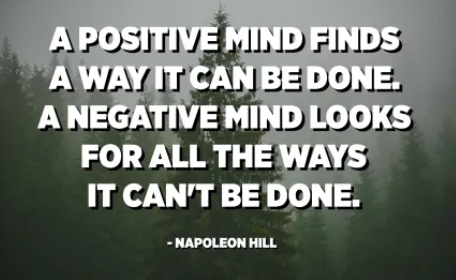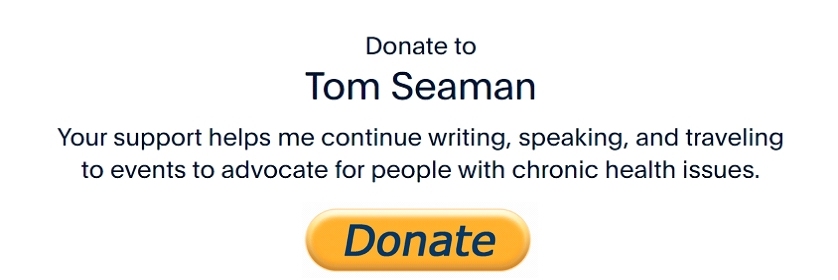Understanding and improving our stress response to reduce pain and suffering
Having lived with chronic pain from dystonia for over 20 years, I spent most of that time focused on treating the physical symptoms. This has been very important and helpful, but for too long I neglected the impact of my emotional state, which was one of anger, sadness, bitterness, and hatred for what my life had become. I lost my physical ability to do anything without blinding pain, so these were not unreasonable feelings.
However, I let these feelings last way too long and take over my life, causing me to be overly stressed which worsened my health. I had what I call a defective processing system. If you struggle with stress, you, like me, also have a processing defect. A processing defect is not a negative term or judgment. It simply refers to the way that we process life events that cause us pain and suffering that could be processed differently to not have as much of an impact on us. In other words, our mental processing system is what we use to create perceptions about the things that happen to us in life, which can work to our benefit or to our detriment depending on how well how processing system is working.

The reason for various defects is because of our patterns of thinking and responding throughout our lifetime. If we spend years thinking and responding to things the same way, it creates a default system that can keep us at ease, if our processing system is efficient, or keeps us in a state of stress, if our processing system is in need of some repair. The only way to change our defective default response (or gut/visceral response) is to practice our tails off with a new internal dialogue, perspective, mindset, and attitude.

Human beings learn through repetition so the only way to change our brain’s defective thinking system to manage stress, as well as not responding to things with anxious or depressed thoughts, is to change the thought patterns we have when we feel under stress, or anxious or depressed, and repetitively expose our brains to this new information. Joe Dispenza has phenomenal information about all of this if you want to check out his work. Wayne Dyer is another great teacher.

Here are some examples of mental processing defects that can be self-harming:
I am not good enough…
It’s too hard…
I can’t do it…
I’m not as lucky as other people…
I should be able to do more…
I don’t think I’ll ever…
I should be better than I am…
I am not strong enough…
He/she made me feel this way…
Nobody cares…
I am not smart enough…

When I began to resolve my negative energy draining thoughts and emotions, which is still a daily (lifetime) practice, it helped me better come to terms with my dystonia and pain, and life began to change. To help me along the way, I practice mind calming activities such as meditation, breathing exercises, and visualization, as well as decluttering my life, removing toxicity, setting boundaries, respecting myself and my time more, not caring so much about things I have no control over, and learning to let go and stop resisting what I don’t like about life.
This helps me learn to not care so much that I have dystonia and pain, which was probably the biggest thing that transformed my life and helped me create a new one. It also eased my nervous system so I was not so easily alarmed by “bad” things that happen to me.

Here is my take on stress… I don’t think it exists. Rather, we create stress by how we perceive and judge life events. In other words, we choose for something to be stressful or not stressful. The reason I say this is because there are things that stress me that wouldn’t stress you, and vice versa. Therefore, if stress were as profound as we all make it out to be, wouldn’t EVERYONE be stressed by all the same things? But we aren’t, so wouldn’t this follow that we choose stress, and we can therefore perhaps “un-choose” stress?
The next time you are feeling stressed, don’t run from it. Don’t hide from it. Go into it and explore what it’s teaching you. Allow yourself to feel whatever it is you’re feeling without any resistance whatsoever. See if you can learn to flow through the situation. With practice, you might be able to reduce your overall stress and perhaps even eliminate some of your triggers.
To help with this, take stress to court and ask some questions: Why does this cause me stress? How can I look at it differently so I can reduce or stop allowing it to stress me? How can I think differently about this situation?
Explore your life to see what all of your experiences are teaching you. Our natural instinct is to run or hide from things that are painful and the reality of the pain that they bring. But it always comes back to haunt us, so I believe it’s better to run towards our problems and do what I call, “embrace the suck of life.” You can read more about that by clicking on this link.

We may not be able to control what is going on around us in our lives or even the pain, but we can control our emotional response to these things. If we react to it in a stressful way it increases pain, frustration, and anger, all of which negatively impact sleep, relationships, etc., and creates more stress. It’s a vicious cycle. You can read more about all of this in my new book, Beyond Pain and Suffering: Adapting to Adversity and Life Challenges, as well as my first book, Diagnosis Dystonia: Navigating the Journey and if you click on this link I have some information on stress management tips.
Life is hard…really hard!! Acknowledging this might be the very first step for you. It’s probably the most important step. Once we accept this fact, the rest will more easily fall into place.
 Tom Seaman is a Certified Professional Life Coach in the area of health and wellness, and the author of 2 books: Diagnosis Dystonia: Navigating the Journey and Beyond Pain and Suffering: Adapting to Adversity and Life Challenges. He is also a motivational speaker, chronic pain and dystonia awareness advocate, health blogger, volunteer for the Dystonia Medical Research Foundation (DMRF) as a support group leader, and is a member and volunteer writer for Chronic Illness Bloggers Network, The Mighty, Brain & Life Magazine, and Patient Worthy. To learn more about Tom, get a copy of his books (also on Amazon), or schedule a free life coaching consult, visit www.tomseamancoaching.com. Follow him on Twitter @Dystoniabook1 and Instagram.
Tom Seaman is a Certified Professional Life Coach in the area of health and wellness, and the author of 2 books: Diagnosis Dystonia: Navigating the Journey and Beyond Pain and Suffering: Adapting to Adversity and Life Challenges. He is also a motivational speaker, chronic pain and dystonia awareness advocate, health blogger, volunteer for the Dystonia Medical Research Foundation (DMRF) as a support group leader, and is a member and volunteer writer for Chronic Illness Bloggers Network, The Mighty, Brain & Life Magazine, and Patient Worthy. To learn more about Tom, get a copy of his books (also on Amazon), or schedule a free life coaching consult, visit www.tomseamancoaching.com. Follow him on Twitter @Dystoniabook1 and Instagram.


























Hello Tom: Once again you have addressed my issues the day they were at their peak. I have been letting this illness , the changes it has come to my life and on and on really stress me out. That only creates more pain and more stress. I will read your book again, readjust my thinking. Thank you again
Hi Lynne- I’m glad this came at a good time for you. I hope things calm down soon and you feel more at ease. Never hesitate to reach out if you need someone to talk to.